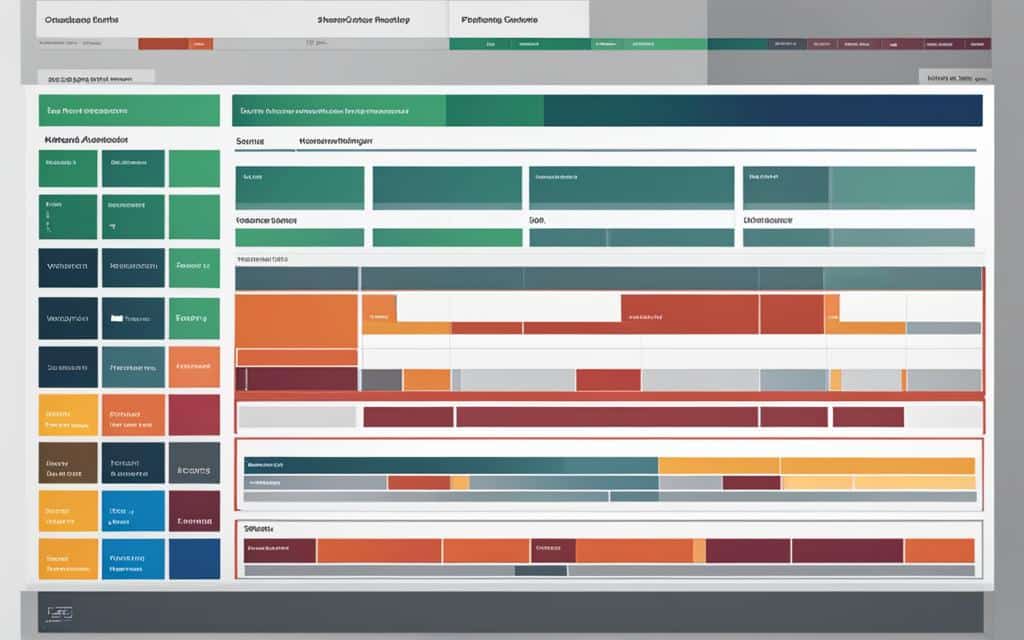Table of Contents
The Web Content Accessibility Guidelines (WCAG) are technical standards developed by the World Wide Web Consortium (W3C) to make websites, apps, and digital assets accessible to people with disabilities. WCAG is not a legal requirement but is widely adopted globally. It covers success criteria such as providing alternative text for images, ensuring text can be magnified, allowing for extended time limits on form entry, maintaining consistent page elements, enabling keyboard navigation, and using proper heading structure.
In this article, we will explore who WCAG is for, the four principles it is based on, different WCAG versions, levels of conformance, and its significance for legal compliance. By understanding and implementing WCAG guidelines, you can create web designs that are inclusive and accessible to all users.
Who is WCAG for?
WCAG is primarily used by web content developers, web authoring tool developers, and web accessibility evaluation tool developers. It is also essential for any business or organization operating a website. Failure to comply with WCAG guidelines can lead to legal consequences, as it is often referenced in legislation and court decisions as the benchmark for web accessibility. Examples include Section 508 of the Rehabilitation Act of 1973, the Accessibility for Ontarians with Disabilities Act (AODA), and the Americans with Disabilities Act (ADA).
Web Content Developers
WCAG provides a comprehensive set of guidelines for web content developers, ensuring that websites and digital assets are accessible to all users, including those with disabilities. These guidelines cover various aspects of web design, such as providing alternative text for images, creating navigable and keyboard-friendly interfaces, and ensuring consistent page layouts.
Web Authoring Tool Developers
WCAG is also essential for web authoring tool developers who create software used to build websites. These tools need to support the creation of accessible content by providing features that align with WCAG guidelines. By adhering to WCAG, web authoring tool developers can empower content creators to design and develop accessible websites.
Web Accessibility Evaluation Tool Developers
Web accessibility evaluation tools play a crucial role in assessing and testing the accessibility of websites. WCAG provides the standard that these tools use to determine if a website meets accessibility criteria. By following WCAG guidelines, web accessibility evaluation tool developers can ensure accurate and reliable evaluations of web accessibility.
“WCAG sets the industry standard for web accessibility, and it is crucial for web content developers, authoring tool developers, and accessibility evaluation tool developers to adhere to these guidelines for creating inclusive digital experiences.” – Sarah Thompson, Web Accessibility Consultant
WCAG’s audience extends beyond developers and tool creators. It is essential for businesses and organizations operating a website to understand and comply with WCAG guidelines. By doing so, they ensure that their online platforms are accessible to all users, regardless of their abilities. WCAG compliance plays a vital role in fostering diversity, inclusivity, and equal access to information and services.
| WCAG Audience | Role |
|---|---|
| Web Content Developers | Create and maintain accessible web content |
| Web Authoring Tool Developers | Create software used to build accessible websites |
| Web Accessibility Evaluation Tool Developers | Create tools for assessing web accessibility |
| Businesses and Organizations | Ensure website accessibility and compliance |
The Four Principles of WCAG: Perceivable, Operable, Understandable, and Robust
WCAG (Web Content Accessibility Guidelines) is built upon four fundamental principles that serve as the foundation for creating accessible web design. These principles are perceivable, operable, understandable, and robust (POUR). Each principle addresses a specific aspect of web accessibility, ensuring that websites are inclusive and usable for individuals with disabilities.
1. Perceivable:
The perceivable principle emphasizes the importance of making information and user interface components presentable to users in ways they can perceive. This includes providing alternative text for images, captions for videos, and text alternatives for non-text content. By making content perceivable, individuals with visual or auditory impairments can access and understand the information presented on a website.
2. Operable:
The operable principle ensures that users can interact with the components of a website using various input methods. This principle focuses on features such as keyboard accessibility, allowing users to navigate and operate the website without solely relying on a mouse or touch screen. By incorporating operable elements, individuals with mobility impairments or those who cannot use a mouse can effectively navigate and interact with web content.
3. Understandable:
The understandable principle aims to make information and the user interface of a website easy to comprehend and operate. This includes using clear and concise language, organizing content in a logical manner, and providing instructions and error messages that are easy to understand. By ensuring understandability, individuals with cognitive or learning disabilities can navigate and utilize web content with ease.
4. Robust:
The robust principle focuses on making web content compatible with different user agents and assistive technologies. This means that websites should be built using standard web technologies and coding practices that ensure compatibility with a wide range of devices and browsers. By adhering to robust principles, web content remains accessible to individuals using various assistive technologies, such as screen readers or braille devices.
By following these four principles of WCAG, web developers can create websites that are accessible to individuals with disabilities, promoting inclusivity and equal access to information and services.
| WCAG Principle | Description |
|---|---|
| Perceivable | Making information and user interface components presentable to users in ways they can perceive. |
| Operable | Ensuring users can interact with website components using various input methods. |
| Understandable | Making information and the user interface easy to comprehend and operate. |
| Robust | Ensuring web content is compatible with different user agents and assistive technologies. |
WCAG Versions: 1.0, 2.0, 2.1, and 2.2
Web Content Accessibility Guidelines (WCAG) have continuously evolved to keep pace with the advancements in technology and digital content. This ensures that websites, apps, and digital assets are accessible to people with disabilities. WCAG has released several versions, each building upon the previous to enhance web accessibility standards.
The first version, WCAG 1.0, was released in 1999 as a groundbreaking initiative towards web accessibility. It introduced key principles and success criteria for creating accessible websites. WCAG 2.0, released in 2008, introduced the renowned POUR principles – Perceivable, Operable, Understandable, and Robust – that form the foundation of web accessibility. This version provided more specific guidelines to improve user experience and accessibility standards.
WCAG 2.1, published in 2018, further expanded the guidelines by introducing additional success criteria that specifically address the accessibility challenges presented by mobile devices, touch screens, and modern technologies. WCAG 2.1 included 17 new criteria to ensure optimal accessibility across various digital platforms.
The latest version, WCAG 2.2, is expected to be released in 2022, and is set to focus on expanding accessibility for users with cognitive and learning disabilities. This ongoing development reflects the commitment of WCAG to evolve in line with the changing digital landscape and emerging accessibility needs.
All versions of WCAG are designed to be backwards compatible, meaning that conforming to the latest version automatically satisfies the requirements of the previous versions. This allows website owners and developers to implement the most up-to-date accessibility guidelines while maintaining compatibility with existing content.
WCAG Versions Summary:
| WCAG Version | Release Year | Main Focus | New Success Criteria |
|---|---|---|---|
| WCAG 1.0 | 1999 | Introduction to web accessibility | N/A |
| WCAG 2.0 | 2008 | POUR principles and detailed guidelines | N/A |
| WCAG 2.1 | 2018 | Mobile devices and emerging technologies | 17 new criteria |
| WCAG 2.2 | Expected 2022 | Enhanced accessibility for cognitive and learning disabilities | TBD |
WCAG Levels of Conformance: A, AA, and AAA
Web Content Accessibility Guidelines (WCAG) provide different levels of conformance to ensure web designs are accessible to all users, including those with disabilities. These levels are categorized as A, AA, and AAA, each representing a different standard of accessibility.
Level A is the lowest conformance level. It sets the baseline for accessibility, encompassing the most significant and basic requirements for web content. Conforming to Level A means that the website addresses a certain level of accessibility.
Level AA is the mid-range conformance level, generally considered the target for most website owners. It encompasses a more comprehensive set of requirements, including those from Level A, while providing a higher level of accessibility. Achieving AA conformance ensures a broader range of users can access and engage with the website’s content.
Level AAA represents the highest level of conformance, offering the most extensive accessibility requirements. Conforming to AAA conformance demonstrates an exceptional commitment to accessibility, accommodating a wider range of disabilities and providing exceptional user experiences. However, achieving AAA conformance may be challenging for certain types of content and is not always feasible.
| WCAG Conformance Level | Description |
|---|---|
| Level A | Baseline accessibility requirements |
| Level AA | Mid-range conformance with comprehensive accessibility |
| Level AAA | Highest level of conformance with exceptional accessibility |
It is essential for website owners to strive for accessibility and understand the legal implications associated with different conformance levels. While WCAG does not impose legal requirements itself, it is often referenced in web accessibility legislation and can serve as a benchmark for compliance.
By adhering to WCAG guidelines and achieving the appropriate level of conformance, website owners can ensure that their digital environments are accessible to everyone, providing equal opportunities and inclusivity for all users.
References:
- WCAG 2.1 at a Glance: https://www.w3.org/WAI/WCAG21/quickref/
- WCAG Conformance Levels: https://www.w3.org/WAI/WCAG21/Understanding/conformance.html
- Web Content Accessibility Guidelines Overview: https://www.w3.org/WAI/standards-guidelines/wcag/
WCAG and Legal Compliance
While WCAG itself is not a legal mandate, it is widely referenced in legislation and court decisions related to web accessibility. Many countries and regions, such as the United States, Canada, and Europe, have incorporated WCAG into their accessibility standards and regulations. For example, Section 508 of the Rehabilitation Act requires federal agencies in the U.S. to conform to WCAG 2.0 AA standards. Failure to meet legal requirements can result in legal consequences and hinder the ability to reach a diverse audience.
Web Accessibility Legislation
One of the key reasons why WCAG is so important is its significant impact on web accessibility legislation. Governments worldwide have recognized the importance of ensuring equal access to digital content for people with disabilities. They have implemented laws and regulations that require organizations to comply with WCAG guidelines in order to avoid legal consequences.
The United States, for example, has several laws that address web accessibility, including the Americans with Disabilities Act (ADA) and Section 508 of the Rehabilitation Act. The ADA prohibits discrimination against individuals with disabilities in various areas of public life, including websites and digital services provided by businesses. Section 508 specifically requires federal agencies to make their electronic and information technology accessible to people with disabilities, following WCAG 2.0 AA standards.
In Canada, the Accessibility for Ontarians with Disabilities Act (AODA) sets accessibility standards for organizations to follow. The AODA requires that all websites and web content developed by public sector organizations and large private sector organizations comply with WCAG 2.0 AA.
In Europe, the Web Accessibility Directive is in place to ensure that public sector websites and mobile applications are accessible to all users, including those with disabilities. The directive incorporates WCAG 2.1 AA as the standard for web accessibility.
| Country/Region | Web Accessibility Legislation |
|---|---|
| United States | Americans with Disabilities Act (ADA), Section 508 of the Rehabilitation Act |
| Canada | Accessibility for Ontarians with Disabilities Act (AODA) |
| Europe | Web Accessibility Directive |
By adhering to WCAG guidelines, organizations can ensure legal compliance with web accessibility legislation and avoid the potential negative consequences of non-compliance. It is essential for businesses and website owners to understand and meet these legal requirements to provide equal access to their digital platforms and reach a diverse audience.
Conclusion
The WCAG guidelines are of utmost importance in the creation of accessible web design. These standards serve as a vital tool for web content developers to eliminate barriers that hinder access to digital information and services for people with disabilities. By adhering to the WCAG guidelines, web developers can ensure equal access for all users and foster inclusivity in the online space.
It is worth noting that WCAG is not a static set of guidelines; rather, it evolves in parallel with technological advancements. This adaptability allows it to cater to the diverse needs of users. With different levels of conformance, WCAG provides flexibility to accommodate a wide range of accessibility requirements. It is, therefore, imperative for businesses, organizations, and web developers to prioritize accessibility by adhering to these guidelines, not only to meet legal obligations but also to create an inclusive digital environment for all users.
Through the adoption of WCAG guidelines, businesses and organizations can set themselves apart by providing accessible web design that considers the needs of users with disabilities. By doing so, they demonstrate a commitment to diversity, equity, and inclusivity. Prioritizing accessibility not only helps avoid legal consequences but also opens up opportunities for reaching a wider audience and enhancing user engagement. By embracing WCAG principles, web developers can contribute to a more inclusive and accessible online landscape.
FAQ
What are the Web Content Accessibility Guidelines (WCAG)?
The Web Content Accessibility Guidelines (WCAG) are technical standards developed by the World Wide Web Consortium (W3C) to make websites, apps, and digital assets accessible to people with disabilities.
Is WCAG a legal requirement?
WCAG is not a legal requirement but is widely adopted globally and referenced in legislation and court decisions as the benchmark for web accessibility.
Who is WCAG for?
WCAG is primarily used by web content developers, web authoring tool developers, and web accessibility evaluation tool developers. It is also essential for any business or organization operating a website.
What are the four principles of WCAG?
The four principles of WCAG are perceivable, operable, understandable, and robust (POUR).
What versions of WCAG exist?
WCAG has evolved over time. The versions include WCAG 1.0, WCAG 2.0, WCAG 2.1, and the upcoming WCAG 2.2.
What are the levels of conformance in WCAG?
WCAG guidelines are categorized into three levels of conformance: A, AA, and AAA. Most website owners aim for AA conformance.
Is WCAG compliance legally required?
WCAG is referenced in legislation and court decisions related to web accessibility in many countries and regions. Failure to meet legal requirements can result in legal consequences.
How does WCAG contribute to accessible web design?
WCAG provides crucial standards for creating accessible web design, removing barriers for people with disabilities and ensuring equal access to digital information and services.













